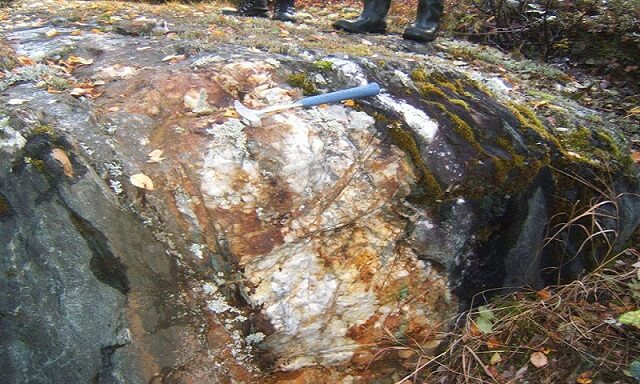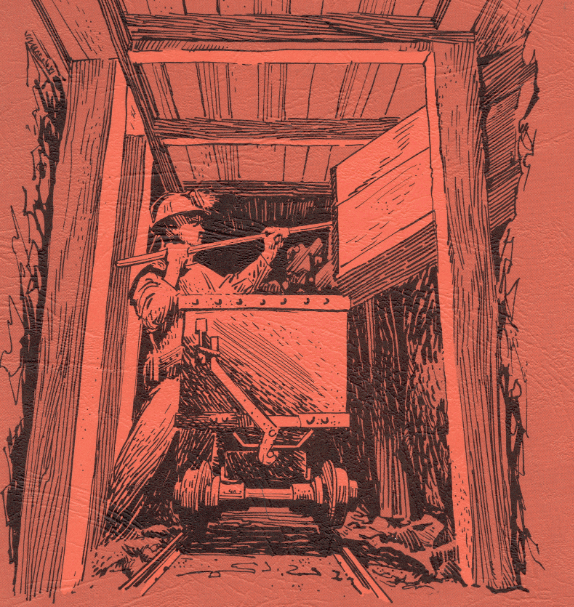How Much is the Cost of Mining Exploration
In the preceding pages some unit costs of sinking, drifting, cross-cutting, and drilling have been presented, together with a few costs covering entire churn-drilling campaigns. Few figures are available covering the total cost of exploring a property before reaching a decision to develop it for production. However, figures are available covering expenditures for exploration and […]
Exploration Drilling
Drilling is employed extensively, either as the principal exploratory method or to supplement exploration by underground and surface workings. Three principal types of drills are employed for this purpose—churn drills, core drills, and hammer drills. In ground too soft to core and in which a churn drill would stick, a rotary drill with a fish-tail […]
Prospecting Lode Gold Deposits

Prospecting for lode deposits begins with a search for mineralized outcrops, the key to the existence of which may often be found in mineralized float (pieces of rock from the lode that have been loosened by weathering and washed downhill). Geologists now generally agree that most valuable mineral deposits have a magmatic origin and, therefore, […]
Prospecting Placer Gold Deposits
Prospecting for placer gold, except perhaps in the case of buried placers, is the simplest form of prospecting. Gold, platinum, and tin are the principal metallic minerals won from placers, but gold (alloyed with varying percentages of silver) is the only metal that has been recovered in commercially important quantities from placers in the United […]
Exploration Drill Sampling Techniques
A brief summary of the methods employed and the costs of prospecting and exploration has been presented in the preceding pages. The primary object of such work, as already stated, is to find ore and furnish information upon which to base estimates of its quantity and grade. Estimates of ore grade are based on the […]
Methods of Mining Metals
This report summarizes mining practices of a large number of metal mines in the United States and foreign countries. The adaptation of mining methods best suited to the various natural conditions in mines is discussed, and comparative costs are presented. The basic data—gathered in the field by Bureau of Mines engineers and consultants in cooperation with […]
Mining Massive Porphyry Copper Deposits
The past decade has witnessed the development and successful operation of a half dozen or more immense deposits of low-grade copper ore that occur in the Western States. In every case sufficient capital was available to carry out the development of the mines in the manner decided upon, and it is interesting to note the […]
Types of Underground Mining Method Comparison
In any discussion of Methods of Underground Mining Comparison, one is repeatedly confronted with the difficulty of dealing with so many variable conditions. It is not an exact science and in the choice of a method each varying factor has a certain weight, which, in many cases, experience alone can determine. In mathematical terms, it is a […]
Timber Support in Underground Mining

When selecting a square-set design, one should adopt the design having the fewest number of saw-cuts but still providing the maximum support. An excessive number of cuts adds little to the strength of the set, and makes erection difficult. Furthermore, it is difficult to get even contact and bearing between the many faces. (In fact, […]
Underground Mine Timbering & Support

No matter how limited their extent, few underground mining operations progress very far without requiring some sort of support. This Bulletin presents discussion and sketches as a guide for designing underground support of timber, concrete, or steel in relatively shallow workings. Because timber will satisfy most support requirements, this discussion offers methods for supporting drifts, […]
